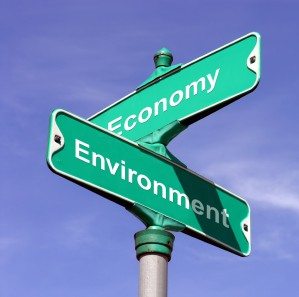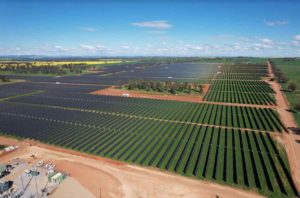The Covid-19 pandemic and resulting recession have cast a pall over Australia’s economy. We’re all still searching for a North Star out of the morass, which forced many industries to freeze their operations just to survive, and with thousands of workers losing their jobs or being furloughed almost overnight.
But as we slowly turn towards recovery, businesses are now looking at the decarbonisation of our economy as a sustainable path out of the recession.
Sure, it took a pandemic — which meant that businesses needed to look at ways to minimise costs in the long run while finding a path back towards profitability – but decarbonisation is firmly on the discussion table at last.
Take Fortescue Metals Group as an example. Its CEO, Andrew ‘Twiggy’ Forrest, has shared his utopian vision in which steel is created not with coal, but hydrogen, which burns cleanly and only emits water.
To me, this is a no brainer. Not only would it bolster our steel industry and create jobs, but it would ensure we take steps towards a net-zero future.
The Grattan Institute predicts that by capturing six-and-a-half per cent of the global steel market, Australia could generate $65 billion in annual export revenue and create 25,000 manufacturing jobs in Queensland and New South Wales, while avoiding carbon border taxes abroad.
And why stop there? Copper, gold, rare earths, hydrogen and ammonia are among a plethora of commodities that Australia could turn green and highly profitable, solidifying our future on the global stage as a green export superpower.
We also need to start asking ourselves some hard questions as to why we aren’t more aggressively taking on China’s dominance in rare earths with greener alternatives?
Electric vehicles (EVs) also offer massive potential for job growth and export opportunities. Australia has vast quantities of lithium, copper and nickel, which are the commodities used in the production of EVs and can be exported to the world.
Tesla’s chair, Robyn Denholm, recently flagged Tesla’s intent to buy more than $1 billion of these critical minerals from Australia, highlighting this unique possibility. Denholm also pointed out the potential for onshore processing of lithium ore – spodumene – a $1.6 billion opportunity that could lead to local manufacturing of lithium batteries and EVs.
Opportunities are not limited to mining and manufacturing, with energy exports also in focus. Two solar megaprojects were recently announced for Western Australia and the Northern Territory which, together, will more than double Australia’s solar capacity. Australia–ASEAN Power Link (AAPL) in the NT will use solar panels produced in a Darwin facility, bringing economic benefits to the region.
This project also aims to supply 20 per cent of Singapore’s electricity needs, and the potential to export green electricity could extend to other regions. Additionally, just a look at the latest news headlines guide thoughts to the huge prospect of green hydrogen simmering away under government funding and competitive posturing by Australia’s biggest energy players.
It’s clear that business opportunities are bountiful in a nation soaked in sunlight and adorned with coastal winds and water. How we capture these opportunities over the next decade will determine our economic standing.
What we need now is investment in innovation, a favourable policy setting and a business community willing to ditch complacency for bold action. But while enthusiasm is abundant, Australia, and our global peers, appear to be stuck in a hurry-up-and-wait approach.
Green is the new black
Our research shows that only 45 per cent of global executives see sustainability as a top priority today, but 75 per cent believe it will be a priority in five years.
What’s the point in waiting? The pandemic has forced businesses to look at their books to find efficiencies, and those that start their decarbonisation plans now are pushing ahead in an altered landscape.
The emergence of carbon border taxes abroad means it’s imperative for Australian businesses reliant on exports to decarbonise now or lose business to their greener local – or global – counterparts.
One issue we see locally with businesses that speak to us about their decarbonisation targets is the inability to turn enthusiasm into action. Businesses need to heed the decarbonisation examples set by organisations here and abroad. Yara, the world’s leading fertiliser company, is in the process of completely reshaping how it produces ammonia at its Pilbara facility in Western Australia, backing green hydrogen as the solution to rid the operation of carbon pollution.
Similarly, OZ Minerals, a copper-focused international mining company based in South Australia, has set its sights on a net-zero end game for its West Musgrave Project – a prospect copper mine already stacked with high renewable penetration.
Now is not the time for businesses to wait on the handing down of regulations or incentives to dictate their road towards decarbonisation. Put simply, it’s not just about an altruistic approach to rebuilding the economy in a sustainable way, but also as a means to remain competitive on a global stage.
Josh Martin is the senior director of ENGIE Impact, which brings together a wide range of strategic and technical capabilities, to provide a comprehensive offer to support clients in tackling their complex sustainability challenges from strategy to execution.









